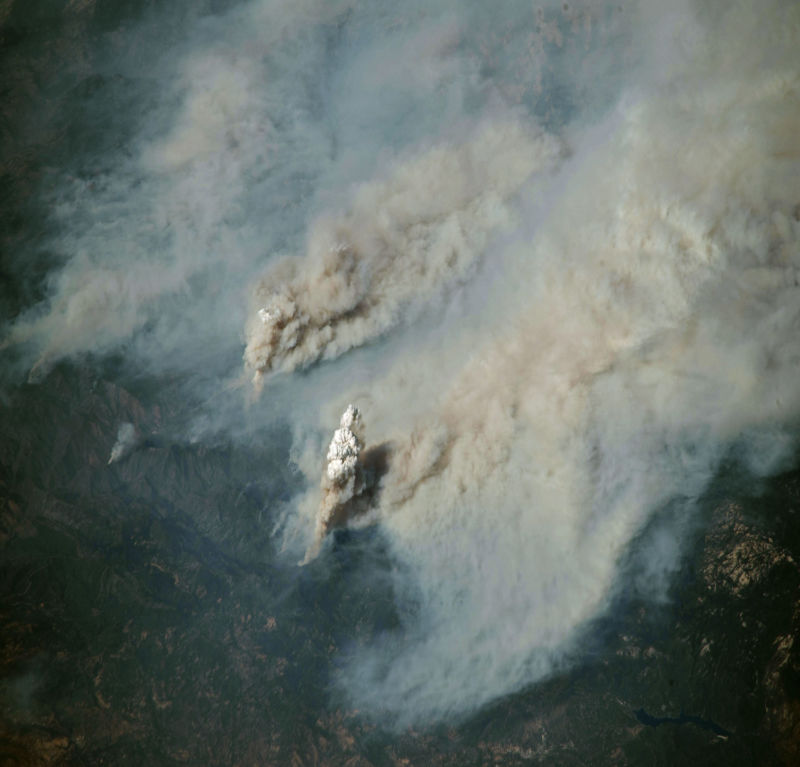Aerosol emissions may not cool the planet as much as we thought

Enlarge / Taken on August 2, 2018, by an astronaut on the International Space Station, this image shows a pyrocumulus cloud rising from the Ferguson fire near Yosemite National Park. (credit: NASA / Flickr)
While humans have been enthusiastically overheating our planet for the last couple of centuries, other forms of our pollution have been quietly offsetting a bit of the damage, helping to cool the climate by affecting cloud formation.
But the extent of the cooling provided by aerosols isn't thoroughly understood, and getting an accurate picture of it is crucial for accurate models of climate change. A paper in Nature this week uses a vast database of cloud data to show that aerosol particles may not lead to as much cooling as we thought.
Aerosols cool the planet, but how much?Aerosols are tiny atmospheric particles of sea spray, smoke, dust, and other substances. They can come from natural sources like sandstorms, as well as from human activities like fossil fuel combustion.
Read 12 remaining paragraphs | Comments